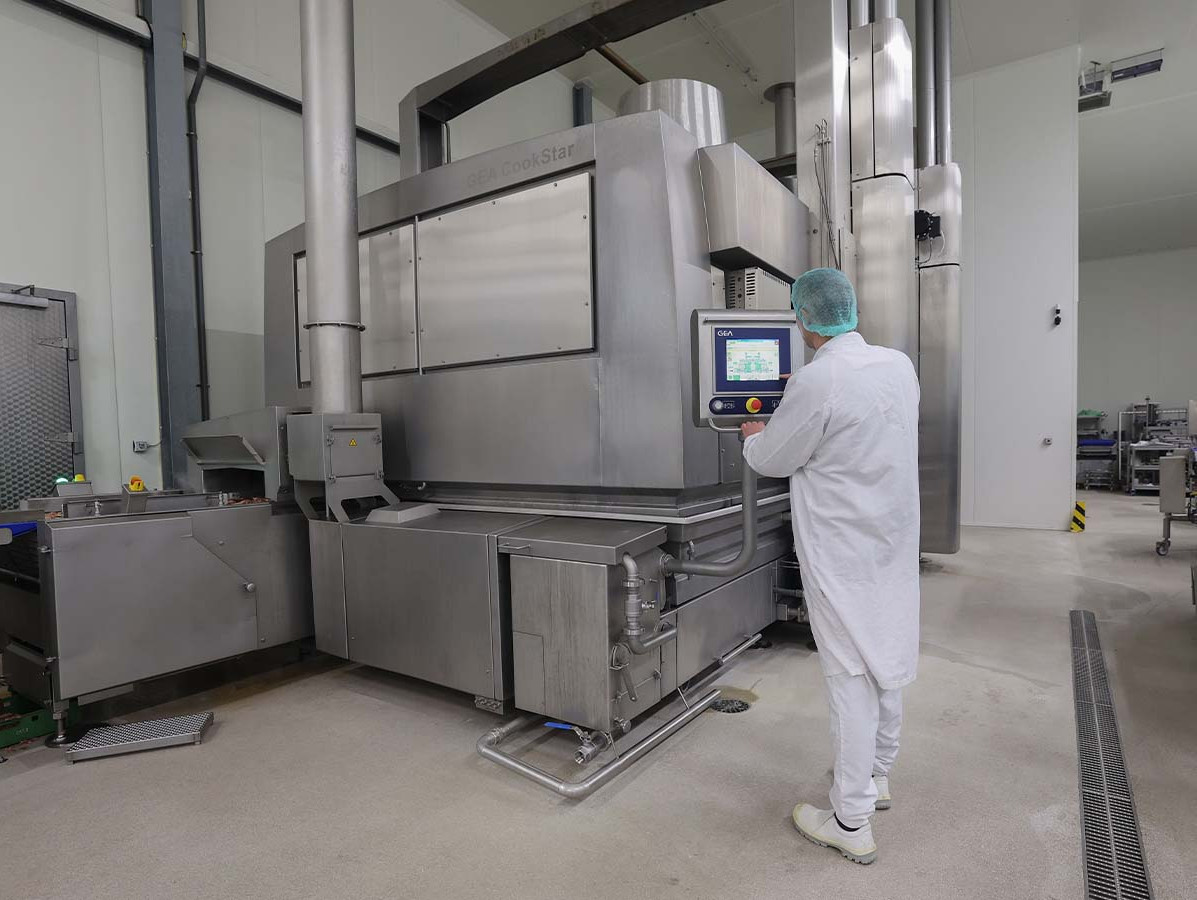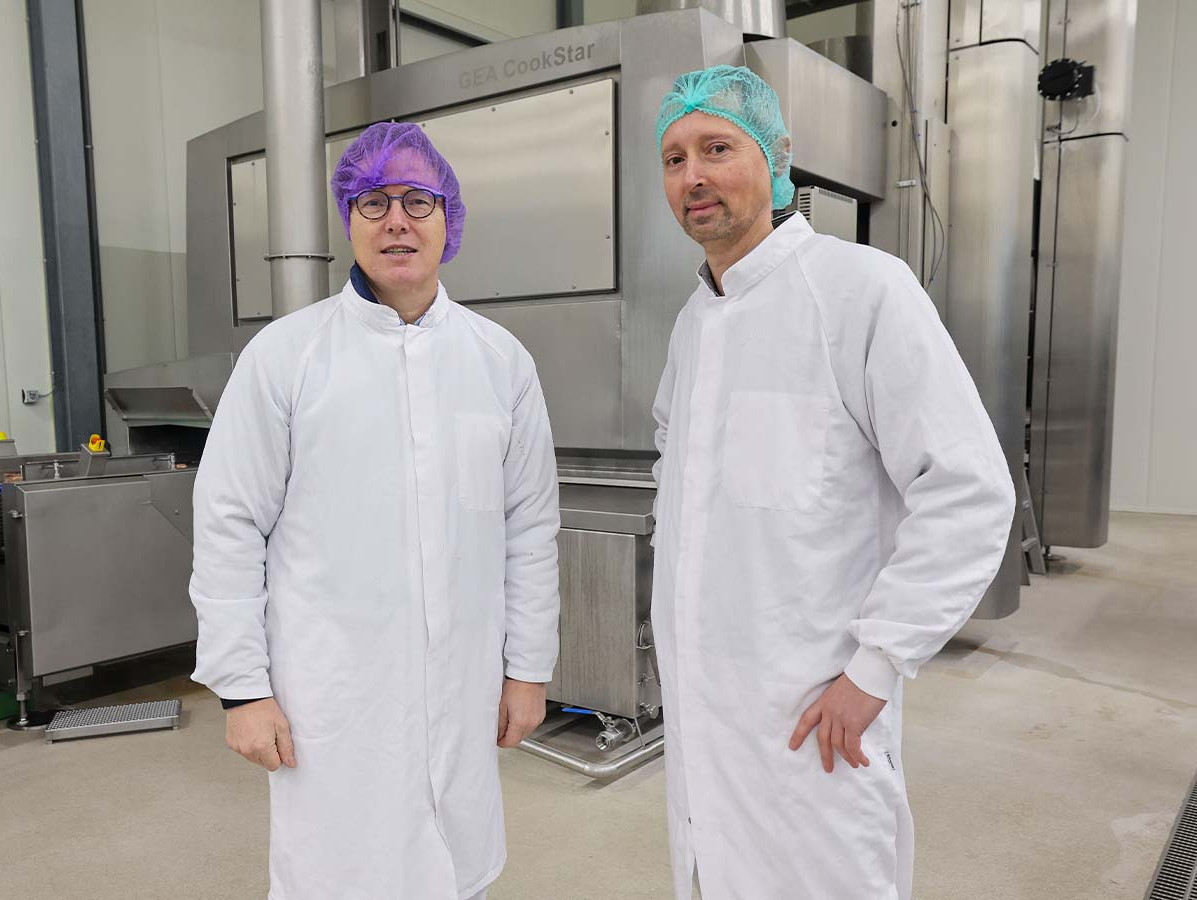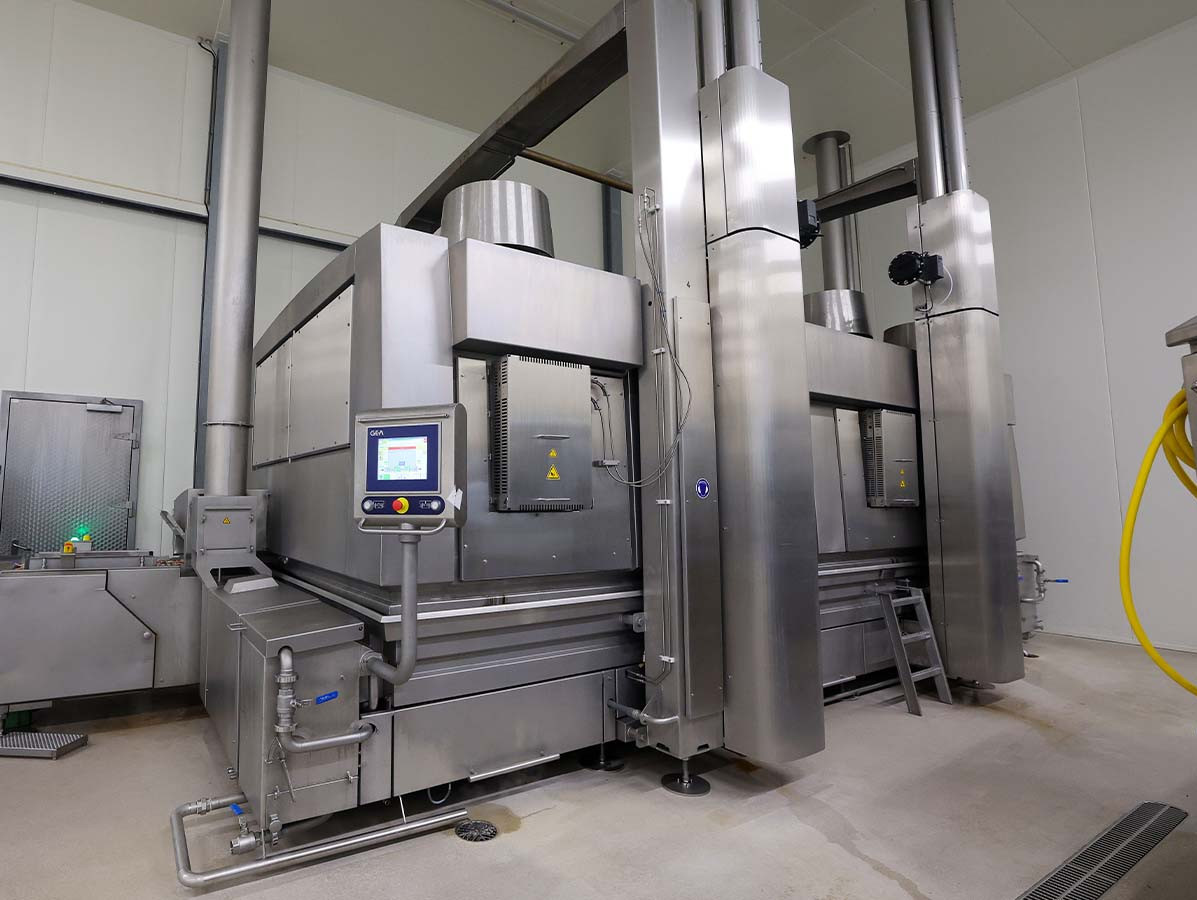
The meat products from Van Loon Group find their way onto eight million Dutch plates every day. Contrary to the perception that sustainability might take a back seat in such a large meat-producing company, the reality is quite the opposite.
Initially, the motivation for adopting a new cooking system at Van Loon Group wasn't primarily driven by sustainability. Sander Krijnen, R&D Manager at Van Loon Group, explains, "Our main goal was to scale up. We acquired production from another location focusing on vegan products. Additionally, there's been a significant surge in the popularity of cooked products in recent years. However, during testing, we found that the energy consumption was significantly lower than with our previous oven, an added benefit that aligned with our sustainability objectives."
Sustainability is a key pillar for the major meat producer. Van Loon was the first retail supplier to switch to 1-star Beter Leven (Better Life) pork, led the way in plastic reduction in packaging (the first to package minced meat in a flow pack), introduced the meat substitute brand The Blue Butcher, and, through two proprietary concepts, 'Varken op z'n Best' (Pig at its Best) and 'Rund op z'n Best’ (Beef at its Best), is dedicated to sustainability across the entire supply chain, even extending to feed and stable design. Meanwhile, behind the scenes, they are pondering intensely on how to broaden the definition of sustainability in the coming years. Or, as Sander puts it, "Sustainability does not stop at energy consumption."

Paul Verbruggen, Product Owner Heat Treatment GEA and Sander Krijnen, manager R&D bij Van Loon Group
Every day, Van Loon Group products grace the plates of eight million Dutch consumers, solidifying its position as a market leader in meat and convenience. Founded in 1971 by Jos van Loon, the company has steadily grown under the leadership of his sons Erik (Chairman of the Board of Commissioners) and Roland (CTO). The company's values have evolved to meet contemporary needs: “We want to make sustainable eating accessible to everyone—affordable and available through supermarkets and increasingly through convenience channels. We supply raw materials but also make plenty of meals, soups, salads and sauces ourselves," says Sander.
Throughout its 52-year journey, Van Loon and its successors have faced challenges. “In recent year these have mainly been the raw material availability and rising prices, and we are currently focusing on shaping the protein transition.” Sander notes, "In the years before COVID, meat substitutes were gaining significant traction. However, the landscape is shifting: meat substitutes are considered more expensive, overly processed, or simply not enjoyable. Hybrid products are a potential solution, and we're actively experimenting with them."
Amid the recent tumultuous events (COVID, war, inflation), the question arises: can manufacturers accurately predict what their products will look like in one, two, or five years? Probably not. Hence, one of Van Loon's long-standing machine suppliers, GEA, is prioritizing flexibility. Marcel van den Heuvel, Senior Area Sales Manager at GEA, explains, "In 2007, we delivered the first generation of the CookStar cooking system here, primarily for cooking burgers and sausages. Since then, we've made several improvements: for example, the new CookStar can also handle smoking. While not currently utilized, having the option is more energy-efficient for cooking and smoking in the same line rather than in batches."

In 2022, Van Loon in Best (one of the production locations for retail and foodservice) implemented the third and latest generation of CookStar, featuring a double spiral. This system not only offers greater flexibility but also optimizes process and climate control. Marcel highlights, "This system can remove moisture from the oven without losing energy. Additionally, products can achieve the same core temperature at a lower oven temperature, resulting in lower energy consumption and, consequently, lower total cost of ownership." Sander adds, "The capacity is about 40% higher than before. Although the conveyor belt is slightly longer, the relative difference is still substantial. The same applies to cooking times. For example, chicken wings now only need to cook for 18 minutes instead of 22 minutes."
In addition to chicken wings, the massive oven accommodates spare ribs, sausages and burgers. Sander notes, "Ideally, we'd like to differentiate energy costs at the product level—a next step we're considering." Fortunately, Marcel provides insight, "As we move to the next generation CookStar, the focus is on digitization. We may be the market leader in cooking systems for the food market, but that doesn't mean we can rest on our laurels."
www.vanloongroup.com/nl
www.gea.com
Photos: © Bert Jansen Fotopersburo
Source: Vakblad Voedingsindustrie 2024